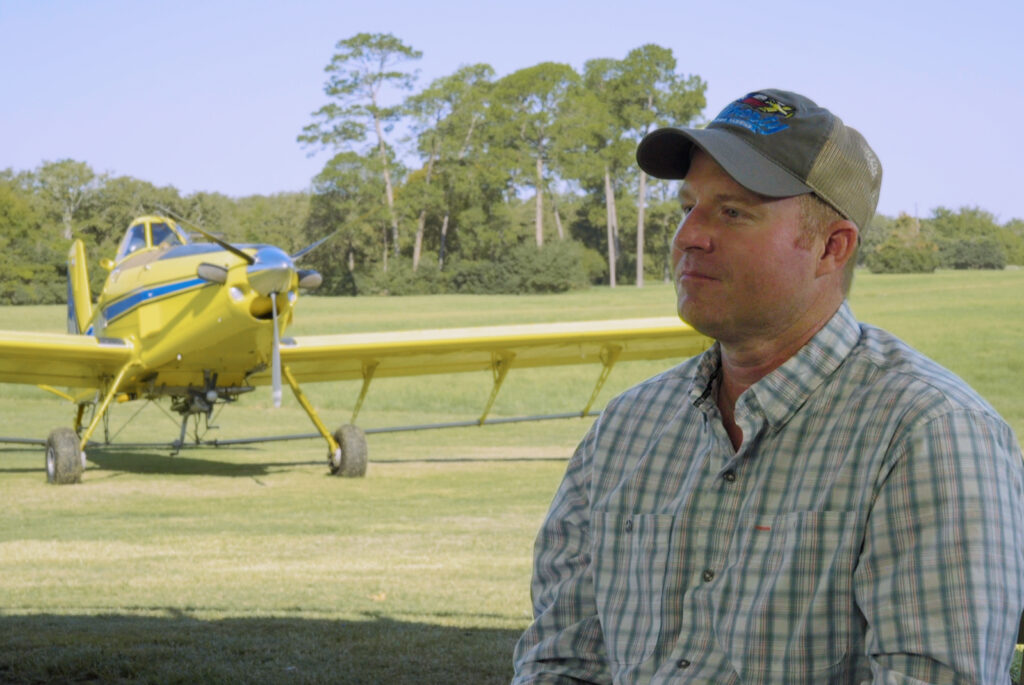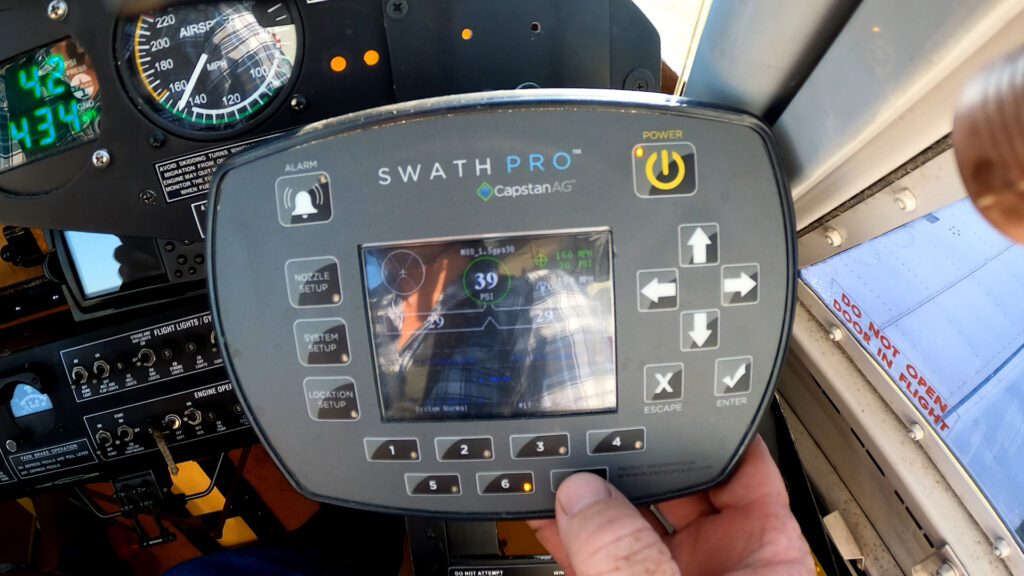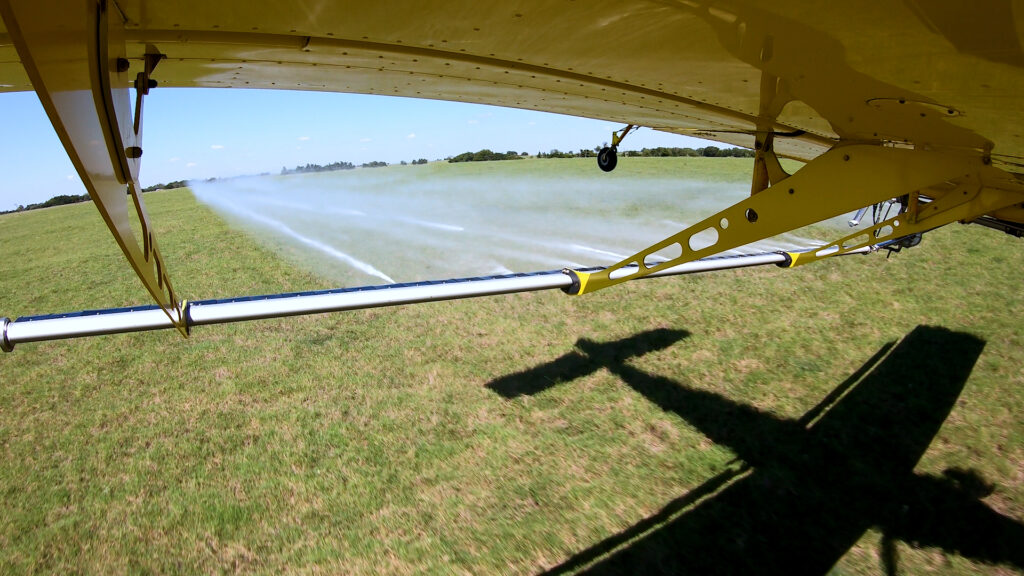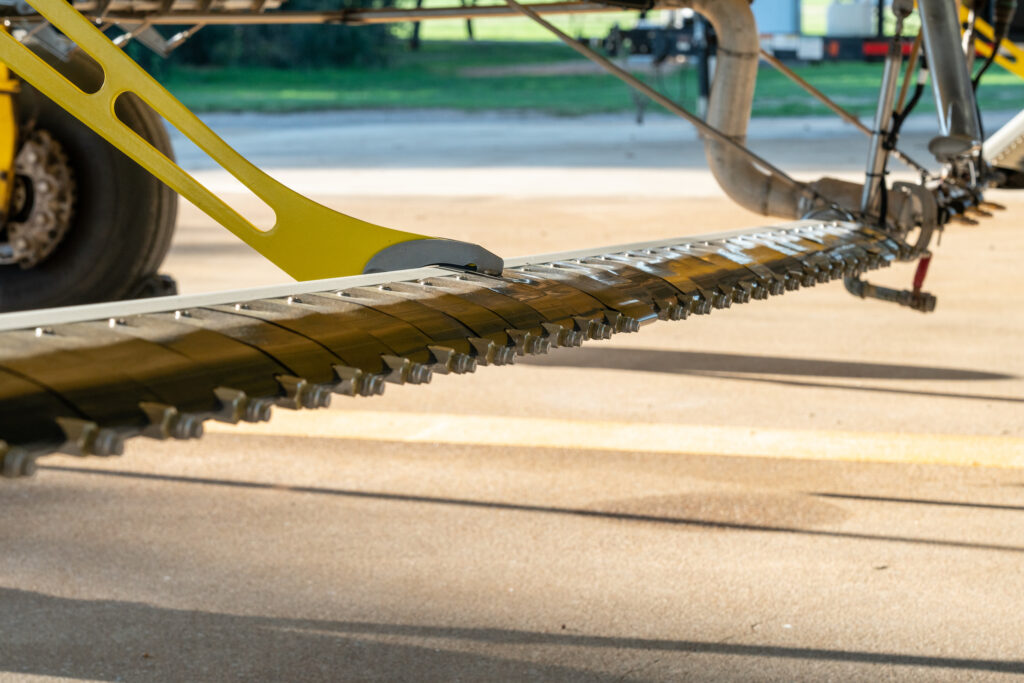Texas aerial applicator gives SwathPRO™ system a thumbs up.

Brad Lauderdale – Liberty Flying Service, Castroville, TexasAir Tractor pilots who have been flying with the recently STC-approved CapstanAG™ SwathPRO aerial application system say it has helped them achieve superior drift mitigation. Aerial application and crosswind compensation is controlled from the cockpit and optimized on the fly.
“It’s given us the opportunity to adjust gallons per acre and swath width,” said Brad Lauderdale, a third-generation pilot, at Liberty Flying Service based in Castroville, Texas. “With the pulse width modulation and keeping constant pressure on the nozzles that you set up your boom with, the system has drastically reduced any kind of drift problems we’ve ever had,” he added.
The SwathPRO system allows pilots to make changes while literally “on the fly,” as pilots can alter the swath width and flow rate with predetermined settings by cutting off individual nozzles and adjusting spray boom pressure from the cockpit. Pilots also can choose either the left, right, or center booms individually or a combination of boom selections while spraying, further enhancing the control of the spray.
Lauderdale has been using the system for several years as part of a field test group. Liberty Flying Service primarily sprays row crops, pasture brush, and vegetables, as well as some organic flying which lasts all season long. Liberty installed the SwathPRO system nearly three years ago on an Air Tractor AT-502B. Several pilots have flown the airplane applying various herbicides: Roundup®, Liberty®, 2,4-D, Sendero® on brush and for cotton defoliation.
“We’ve probably sprayed close to 400,000 acres with this SwathPRO system on the AT-502. I would say most of those acres, 350,000 of them, have been herbicide work. The system probably has close to 1,500 hours on it,” Lauderdale estimated.
The system has allowed Liberty Flying Services to take on more work and work more efficiently while providing cleaner jobs. “With a 10-mile-an-hour wind and the SwathPRO system, we were running straight streams, drift control, everything that I normally do. That was one of many times flying with the SwathPRO system that I’ve just been so impressed knowing that it was the system. It was the ability of that system to control for drift and ensure the droplet sizes were all the same, all the time,” he said.
Lauderdale described the spray boom configuration that works well for him. He runs straight streams on every third nozzle, straight-back flat fans at every other third nozzle, and then a 45-degree down flat fan at the remaining third nozzles across the boom. All the flat fans are size 10 tips. The straight streams are size 20. “We can get it up to about three and a half gallons per acre if we need to on a straight stream.”
“Sometimes farmers will turn in planted acres and the staff in the office can’t figure it out. So, you just go off that…but then discover the field is different. Different conditions, different ways to trim it up. You can make all those adjustments and not have to come back with another herbicide load. So that has saved a lot of time, effort, money on a busy day that’s packed with 2,000 or 3000 acres you got to get done today. Between that nozzle set up and those profiles, it’s really helped add efficiency to the organization.”
With Roundup work, Lauderdale said he has averaged 2-1/2 to 3 gallons per acre. “We can go lower volume with the straight-back flat fans when we’re burning down milo or something like that. We can run a wider swath and a lower volume to cover more ground. That has allowed me to go anywhere from 8 to 10 gallons per acre all the way down to 1 gallon per acre with the profiles we’ve set up.”
He added the system is easy to maintain. “We’ve found that keeping the spray system cleaned weekly eliminates a lot of trouble,” he said. “The maintenance on it is similar to an electrostatic system.”
Lauderdale tracked the annual operation cost for the SwathPRO system outside the initial purchase cost. “It’s probably equal to what you’d pay on a regular aluminum boom system that you get with an Air Tractor out of the factory,” he said.
He recommends that an operator who is thinking about buying the system needs to evaluate the kind of jobs they do. “It really pays off on herbicide work. It’s where we make our money with it here. Drift mitigation is probably 90 percent better, in my opinion. It’s hard to put a number on that—but I can put a number on it: In two and a half years, I haven’t had to deal with the Texas Department of Agriculture.”
“If you do a lot of cotton defoliation, I’ve noticed a night and day difference. If you’ve done any defoliation work, you know that it either didn’t overlap enough or overlapped too much,” he said. “Since I started using the SwathPRO system, running straight-back flat fans and the 45-degree flat fans is how we defoliate anywhere between 2 to 3-1/2 gallons an acre. It is a beautiful initial defoliation job on irrigated cotton. And then the second shot is clean.”
Lauderdale’s verdict? “I’ve improved my business. I’ve got more customers that have come to us because we’ve got prettier work,” he said. “I’m able to do jobs that other operators can’t do, or they just turn down. There are jobs that I know I can do now because I’ve got confidence in the system.”
Contact your Air Tractor dealer for sales, installation, or service questions. For more information about the SwathPRO aerial application system, visit www.airtractor.com/swathpro.



